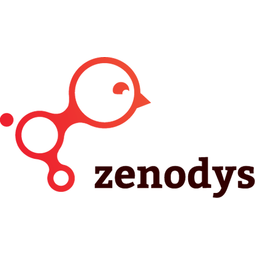
技术
- 平台即服务 (PaaS) - 连接平台
- 平台即服务 (PaaS) - 数据管理平台
适用行业
- 公用事业
适用功能
- 商业运营
用例
- 能源管理系统
客户
荷兰公用事业公司 Alliander
关于客户
荷兰公用事业公司 Alliander
挑战
现在有许多可用的电力来源。除了一些公用事业经销商外,还有太阳能、风能、各种热电联产选项等。电力也可以存储在电池、设施或汽车中。然而,这些来源中的每一个都有其具体情况——太阳并不总是闪耀,风并不总是在吹,电池可能会变空……公用电网总是可用的,但是,来自电网的电力可能很昂贵。我们接下来面临的挑战是——如何利用这些电源来充分利用它们并证明投资的合理性。
解决方案
在德国海因斯堡,我们试图解决这些问题。我们能够将我们的物联网硬件 ZenoBox 与太阳能逆变器、SMA Sunny Island 电池控制器相集成,将其连接到 Daikin HeatPump 控制器,并将其转换为托管 Alliander 的 REX 和 PowerMatcher 服务的服务器。 Daikin HeatPump 使用 Modbus TCP 协议,电池控制器和太阳能逆变器使用 Modbus RTU。他们的智能算法和 Zenobox 之间的通信是 MQTT。但是对于我们的可视化应用程序环境,我们不必处理低级编程,它只是通过拖放图标、可视化连接它们并设置属性的可视化开发。此外,此类系统的维护也很容易——只需更改属性、更改元素的连接方式,甚至添加新元素并动态扩展功能。这意味着新设备,无论他们使用 z-wave、1-wire、I2C、蓝牙低功耗 (Ble)、RS232、EnOcean……语言,都可以轻松添加到现有系统中。我们为这次成功感到非常自豪——我们有机会参与到智能配电未来的创造中。尤其是,我们很高兴看到 Zenodys 物联网平台已经过验证,并且 ZenoBox、ZenoConnect 和我们的 Visual 应用程序被证明是一种可以以优雅且无需编程的方式连接硬件、软件和服务的工具。最重要的是……在我们的物联网平台的帮助下,该项目的完成时间大大缩短。

Case Study missing?
Start adding your own!
Register with your work email and create a new case study profile for your business.
相关案例.

Case Study
IoT Solutions for Smart City | Internet of Things Case Study
There were several challenges faced: It is challenging to build an appliance that can withstand a wide range of voltage fluctuations from as low at 90v to as high as 320v. Since the device would be installed in remote locations, its resilience was of paramount importance. The device would have to deal with poor network coverage and have the ability to store and re-transmit data if networks were not available, which is often the case in rural India. The device could store up to 30 days of data.

Case Study
Automation of the Oguz-Gabala-Baku water pipeline, Azerbaijan
The Oguz-Gabala-Baku water pipeline project dates back to plans from the 1970’s. Baku’s growth was historically driven by the booming oil industry and required the import of drinking water from outside of the city. Before the construction of the pipeline, some 60 percent of the city’s households received water for only a few hours daily. After completion of the project, 75 percent of the two million Baku residents are now served around the clock with potable water, based on World Health Organization (WHO) standards. The 262-kilometer pipeline requires no pumping station, but uses the altitude differences between the Caucasian mountains and the capital to supply 432,000 m³/d to the Ceyranbatan water reservoir. To the people of Baku, the pipeline is “the most important project not only in 2010, but of the last 20 years.”

Case Study
GPRS Mobile Network for Smart Metering
Around the world, the electricity supply industry is turning to ‘smart’ meters to lower costs, reduce emissions and improve the management of customer supplies. Smart meters collect detailed consumption information and using this feedback consumers can better understand their energy usage which in turn enables them to modify their consumption to save money and help to cut carbon emissions. A smart meter can be defined in many ways, but generally includes an element of two-way communication between the household meter and the utility provider to efficiently collect detailed energy usage data. Some implementations include consumer feedback beyond the energy bill to include online web data, SMS text messages or an information display in consumers’ premises. Providing a cost-effective, reliable communications mechanism is one of the most challenging aspects of a smart meter implementation. In New Zealand, the utilities have embraced smart metering and designed cost effective ways for it to be implemented. The New Zealand government has encouraged such a move to smart metering by ensuring the energy legislation is consistent with the delivery of benefits to the consumer while allowing innovation in this area. On the ground, AMS is a leader in the deployment of smart metering and associated services. Several of New Zealand’s energy retailers were looking for smart metering services for their residential and small business customers which will eventually account for over 500,000 meters when the multi-year national deployment program is concluded. To respond to these requirements, AMS needed to put together a solution that included data communications between each meter and the central data collection point and the solution proposed by Vodafone satisfied that requirement.

Case Study
NB-IoT connected smart meters to improve gas metering in Shenzhen
Shenzhen Gas has a large fleet of existing gas meters, which are installed in a variety of hard to reach locations, such as indoors and underground, meaning that existing communications networks have struggled to maintain connectivity with all meters. The meter success rate is low, data transmissions are so far unstable and power consumption is too high. Against this background, Shenzhen Gas, China Telecom, Huawei, and Goldcard have jointly trialed NB-IoT gas meters to try and solve some of the challenges that the industry faces with today’s smart gas meters.

Case Study
OneWireless Enabled Performance Guarantee Test
Tata Power's power generation equipment OEMs (M/s BHEL) is required to provide all of the instrumentation and measurement devices for conducting performance guarantee and performance evaluation tests. M/s BHEL faced a number of specific challenges in conducting PG tests: employing high-accuracy digital communications for instrumentation, shortening setup and dismantling time, reducing hardware required, making portable instrument setup, avoiding temporary cabling work and the material waste costs

Case Study
British Gas Modernizes its Operations with Innovative Smart Metering Deployment
The UK government has mandated that smart meters are rolled out as standard across Great Britain by end of 2020, and this roll-out is estimated to create £14 billion in net benefits to the UK in consumer energy savings and lower energy generation demand, according to the Oxford Economics report, “The Value of Smart Metering to Great Britain.” While smart-metering systems have been deployed in many countries, the roll-out in Great Britain is unique because it is led by energy retailers, who have responsibility for the Electricity and Gas meters. The decision to have a retailer-led roll out was made by DECC (Department of Energy and Climate Change) to improve customer experience and drive consumer benefits. It has also led to some unique system-level requirements to support the unique local regulatory model.



